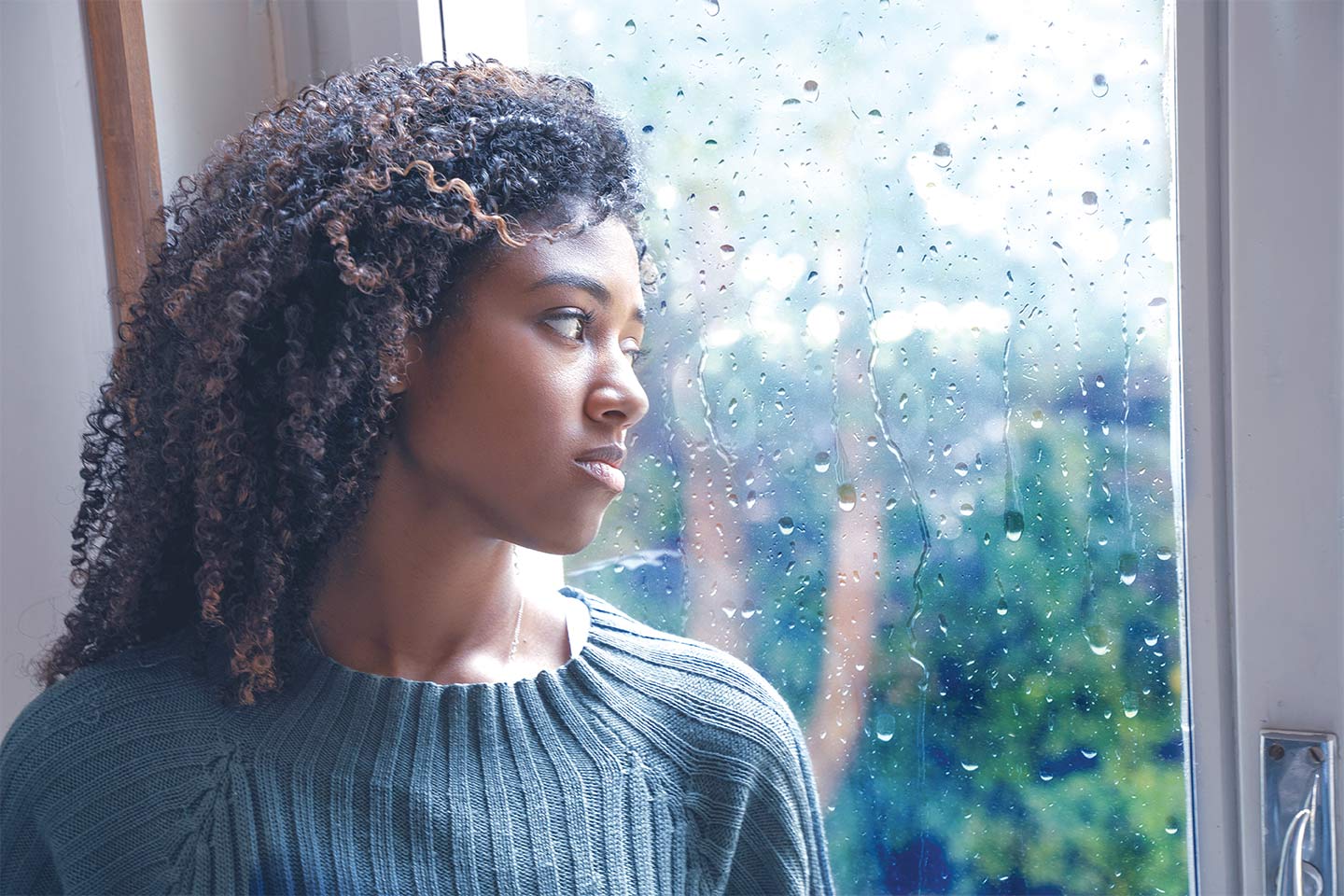Differences in Biology, Symptoms, and Risk Factors
Depression comes in many forms. Approximately 1 in 6 people will experience depression at some point in their lives – but something that people often don’t know is that women are more likely to experience depression than men. In fact, roughly one-third of women will experience a major depressive episode in their lifetime. Here, we explore the causes and symptoms of depression that disproportionately or uniquely affect women.
By Anna Hill


Licensed Professional
Counselor & Director of Physician and Provider Relations, Parkridge Valley Hospital
Risk Factors
While there are a great number of risk factors that can predispose any person to depression, such as genetics, environmental factors, biochemistry, a lack of social support, and personality traits (such as low self-esteem), there are some predisposing factors that are unique to women. For example, according to Kristin Smith, the director of physician and provider relations at Parkridge Valley Hospital, “Women are at a higher risk of depression due to hormonal causes, as hormones can fluctuate surrounding pregnancy, fertility issues, and menopause. Hormones alone do not cause depression, but they can certainly exacerbate its risk factors.”
Unfortunately, biological factors aren’t the only ones that increase a woman’s predisposition to depression. A woman’s environment can contribute to her likelihood of depression, and some sociocultural stressors often affect women disproportionately. These might include:
- SOCIOECONOMIC INEQUITY. Women are statistically more likely than men to live in poverty. This can lead to a decline in access to community or healthcare resources, which in turn can increase feelings of stress, negativity, isolation, and low self-esteem.
- HAVING TOO MUCH ON HER PLATE. Many women work outside the home while also being the primary caregiver at home. Women are more likely to be single parents than men, and the stress of being the sole breadwinner as well as the only caregiver can be challenging and often overwhelming.
- ABUSE. Women who were or are sexually or physically abused as children or adults have an increased likelihood of developing depression at some point in their lives, and women are more likely to be sexually abused than men.


OB/GYN, Erlanger Women’s Health
Symptoms & Signs
Everyone experiences depression differently, and symptoms of it can vary widely from person to person. Some common symptoms of depression that can occur in anyone include:
- Persistent sad, anxious, or “numb” mood
- Feelings of hopelessness, irritability, or worthlessness
- Decreased energy and changes in sleep patterns
- Loss of interest in hobbies or activities
- Restlessness and decreased ability to concentrate
However, some symptoms might occur more commonly in women in particular. “Women may be more susceptible than men to physical symptoms of depression, such as seemingly unexplained pains, headaches, or digestive problems,” explains Smith. Furthermore, some women might experience symptoms that they don’t even realize are signs of depression thanks to their environment or medical history, such as appetite changes, fatigue, and body aches.
Hormones
As mentioned briefly above, hormonal changes and fluctuations can have a significant effect on a woman’s mental health. While it’s important to recognize that hormones alone aren’t the cause of depression, they can play a role in it developing – primarily during a woman’s reproductive years. For example, when a girl goes through puberty, her body and life goes through a period of significant changes. Grappling with emerging sexuality and identity, pressure to perform well in middle school and high school academics and athletics, and more difficult parent-child relationships can all contribute to depression.
Hormones also fluctuate around menstruation, and while changes in mood are not uncommon for women at this time, for some women it can turn into premenstrual dysmorphic disorder (PMDD). More severe than premenstrual syndrome (PMS), PMDD elevates common symptoms of PMS such as mood changes, pain, bloating, and appetite changes to a debilitating point – sometimes even causing suicidal thoughts. Thankfully, there are methods of treatment for PMDD, including both lifestyle changes and medication.
At the end of a woman’s reproductive years, she transitions into menopause. While there are typical symptoms of this – such as abnormal periods, changes in sleep patterns, mood swings, and hot flashes – persistent feelings of sadness, anxiety, or hopelessness are not typical. If a woman going through menopause is experiencing these feelings, she may be going through perimenopausal depression and should consult with a healthcare provider.
Perinatal Depression
Perhaps one of the most well-known forms of depression that is specific to women is perinatal depression, which many know as postpartum depression. “Perinatal depression can be difficult to distinguish from ‘regular’ depression, but the hallmark is that it occurs during pregnancy or within 12 months postpartum,” explains Dr. Heather Urrego, an OB/GYN with Erlanger Women’s Health. This type of depression is actually quite common – it occurs in approximately 1 in 7 women and can be mild or major depression.
The trouble with diagnosing perinatal depression is that sometimes it can be difficult to distinguish between routine changes in your life shortly after giving birth – such as changes in sleep, appetite, and libido – and symptoms of depression. Because of this, OB/GYNs will often screen for perinatal depression at the patient’s postpartum visit. “If necessary, an obstetrician can start medications to treat perinatal depression in the patient unless they believe that there could be risk of the patient hurting herself or others,” says Dr. Urrego. “The other major concern would be something other than depression, such as mania or bipolar disorder. In these cases, it is often prudent to consult with a psychiatrist.”


Women are around twice as likely to be diagnosed with depression as men. While this may seem like a shocking statistic, the good news is that, as depression is one of the most common mental health disorders, much research has been done in regard to treating it, and there are options available. If you’ve been experiencing any symptoms discussed here for over two weeks, reach out to a healthcare professional to talk about it.


